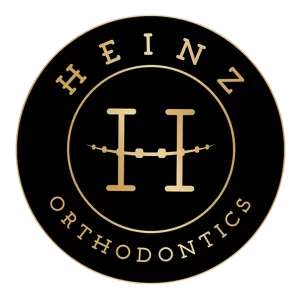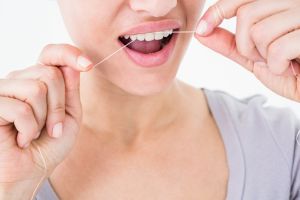When interacting with mobility-impaired patrons in your dental clinic, try to be accommodating, and remember always to ask how you can help, rather than jumping to action.
The dental profession has not always excelled in terms of diversity, equity, and inclusion. Slowly, the “good ole boys club” is evolving. As we have learned from recent articles in the Journal, we are making strides in the right direction by bringing more women and underrepresented colleagues into our ranks. Fortunately, not many dentists have abundant personal experience with physical disabilities and the subsequent challenges they bring to our physically demanding occupation. I do.
As a paraplegic orthodontist, I have a unique perspective on inclusion regarding individuals with physical disabilities. I hope that the “Cliff Notes” version of my journey can help offer you and our profession a glimpse at some of the challenges physical disabilities present, so that we can help accommodate and include patients and community members alike. I had just started my second year of dental school when I was involved in a dirt biking accident that left me paralyzed. As you can imagine, it was a time of immense change, uncertainty, and worry for my family and me. Fortunately, with a tremendous support system and some flexibility afforded by the University of Detroit Mercy School of Dentistry, I utilized dentistry as an outlet to focus my energy, rather than dwelling on my new disability.
For a year I worked double-time at school. I made up the first semester of my second year during the second semester of my second year to catch up and join the clinic with my classmates. One year after that, I graduated on time with my class, ranking in the top 10. I couldn’t have been happier. I then practiced general dentistry for one year following graduation before attending Indiana University for an orthodontics residency.
I now practice in the Grand Rapids community, both in Rockford and Kentwood. It was, and continues to be, a wild ride for me. Dentistry has been an incredible gift, and I still can’t believe how lucky I am to be able to practice post-injury. However, as you can imagine, I have experienced challenges along this journey both as a provider and a patient. I hope that sharing these experiences can help readers become more inclusive of people with disabilities.
After living in a wheelchair for an extended amount of time, you start to realize that even facilities that are compliant with the Americans with Disabilities Act can be hard to maneuver at times. In my experience, this is especially true in dental offices. In our defense, dental procedures occur in an environment designed for the minimal movement required from doctors and assistants. Most services we provide are accomplished seated in the same position. Operatories are designed for close proximity to supplies and equipment to help achieve efficiencies. A by-product of these layouts is that they are not very navigable by wheelchairs and other mobility aids.
I am not suggesting that everyone redesign their office, but I would suggest thinking about these issues and having a plan in place when those of us who are wheelchair- bound come to your office. Is there one room that would work better than others? Do you have easily movable furniture in a specific operatory vs. another? I would venture a guess that you could figure something out to help, and if not, be sure to inform these patients as soon as you realize they have altered mobility needs.
Recently, I experienced something similar. I was visiting a new referring dental office to give a lunch and learn. When I got to the office, I realized their suite was on the second floor of a building without an elevator. There was no way for me to get in! Fortunately, the doctor and team were incredibly kind and came down to meet and hang out. It was fun turning an awkward situation into a funny story. But it was also a reminder that there are still grandfathered facilities that remain exempt from the Americans with Disabilities Act building code and are, therefore, not accessible to people like me. Now, let me share some insight on etiquette and technique for helping someone with a physical disability. To me, ignorance in these areas is not offensive. I never had experience helping people with disabilities until I experienced my own.
I would be surprised if the average person knew what they were doing without a personal connection to someone with a disability, or specific training in these areas. There is much we each can learn! One thing to remember is that it is essential to always ask before giving help. You would be amazed at how many people will rush up to me and invade my personal space with an intent to “help.” I recognize they are likely coming from a good place, so it’s hard to be mad, but imagine having a stranger come up behind you and start pushing on your back to help you walk up a hill. We need personal space as well. Now, there’s a real chance that I could be struggling with a long and challenging hill. In this case, ask, “Sir, would you mind if I gave you a hand?” It may seem like a minor difference, but it is important to us.
An additional consideration is whether to care for a disabled person in the dental chair or have them remain in their wheelchair. Some patrons, like myself, will transfer themselves onto your chair without issue, and delivery of care then proceeds normally. Others will need assistance getting into the chair. In this case, if you haven’t had specific training on assisting transfers, make sure to ask for guidance before beginning. I recently needed help with a tricky transfer to board a fishing boat in Iceland. Before I had the chance to offer instruction on how to help, a guy attempted to lift me entirely to place me on the boat. Not only was this awkward and unnecessary, it was also dangerous. One slip, and we could have both gone down hard. If he had let me instruct him on the proper technique, the whole process would have been smooth and safe. Others who enter your office won’t be able to transfer into the dental chair at all. It’s therefore essential that you plan how the operatory and equipment are positioned for efficiency and comfort before they arrive.
Sometimes, these patients can back up towards the dental chair to either utilize the dental chair headrest in reverse or use their headrest in a position close enough to the dental chair. As in all aspects of life, preparation is the key to success. When interacting with mobility-impaired patrons in your dental clinic, try to be accommodating, and remember always to ask how you can help, rather than jumping to action. If you currently have patients with physical disabilities, ask them if you could do more to make the setting more comfortable. We don’t need much, and we sure do appreciate the willingness to help.
For those interested in learning how to help with wheelchair transfers and other maneuvers, YouTube and internet resources provide informative tutorials! I am more than happy to address any further questions, concerns, or comments. You are welcome to email me at [email protected].
More about Dr. Jeffrey Heinz
Dr. Jeff Heinz is an up-and-coming leader in the field of orthodontics. He lectures nationally on how to straighten teeth efficiently and effectively with clear aligner systems, participates in clinical trials shaping leading-edge orthodontic products, and is a Diplomat of the American Board of Orthodontics. He served as editor for the Oakland County Dental Society and now serves on the West Michigan District Dental Society Editorial Board. Dr. Heinz grew up in Commerce Township, where he spent most of his free time dirt biking, skiing, hunting, fishing, and enjoying the outdoors as much as possible. Despite his injury, he remains active when not practicing dentistry — for example, enjoying snowboarding. After graduating from Michigan State University, he attended the University of Detroit Mercy School of Dentistry. After practicing general dentistry for a year in Southfield and Milford, Dr. Heinz decided that full-mouth reconstruction and transformative esthetic cases were his passion, and that he needed to specialize in the field of orthodontics. He then spent two years at Indiana University, where he received his Certificate in Orthodontics and a Master of Science degree in dentistry.




